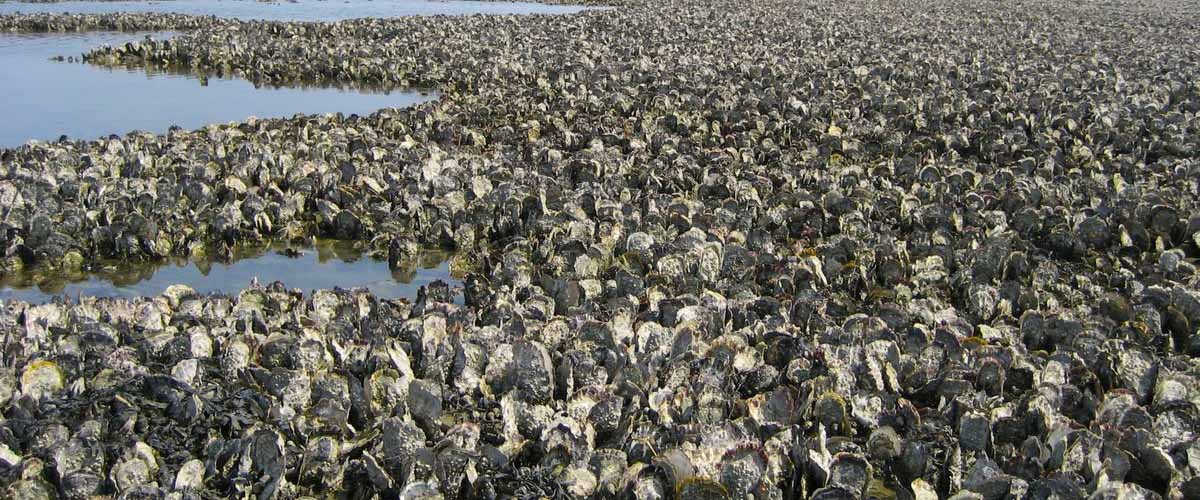Many researchers at the Marine Science Center study how predator-prey interactions shape coastal ecosystems. Steven Scyphers, a postdoctoral researcher in the Grabowski Lab, is one of these, and his work appears in Marine Ecology Progress Series.
“Ecosystem engineers” are species that create or alter habitats by virtue of their presence and their routine behaviors. For example, oysters, which grow in often-complex reef structures, alter water quality through filter-feeding, which can affect how turbid (cloudy) the water is, and which ultimately affects light penetration at increasing depth.
Scyphers’ research looked at two examples of predator-prey relationships in varying light levels, and found that the presence of oyster reefs altered the ability of some predators to effectively target prey, but these interactions often varied depending on light availability. This suggests that coastal resource managers need to consider not only what species are present but also the physical setting of oyster reefs when predicting predator-prey interactions, as the ecosystem engineers that comprise much of the community’s structure can affect these relationships in many ways.

